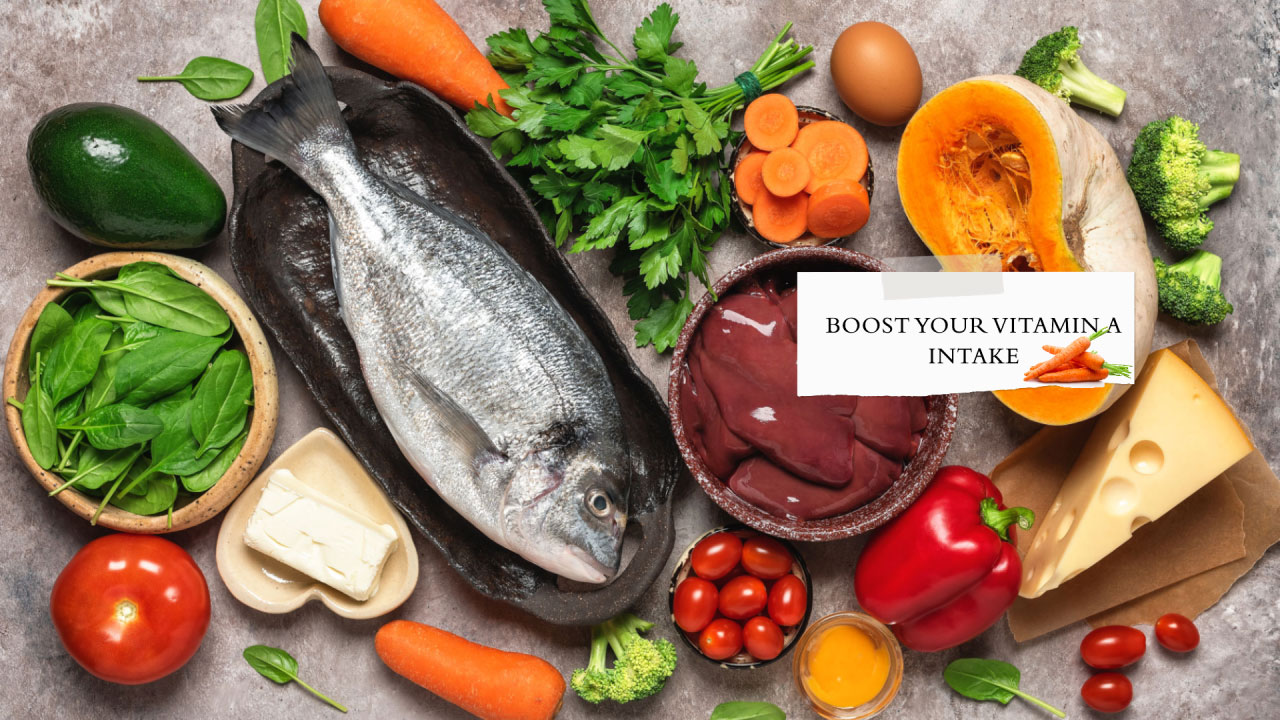The Comprehensive Guide to Vitamin A: Benefits, Uses, and Sources
Vitamin A is a crucial fat-soluble vitamin essential for maintaining various physiological functions. It plays a vital role in vision, immune health, reproduction, and cellular growth.This guide will explore the benefits, uses, and best dietary sources of Vitamin A to help you incorporate it effectively into your diet.
What is Vitamin A?
Vitamin A refers to a group of compounds, including retinoids (such as retinol, retinal, and retinoic acid) and carotenoids (like beta-carotene). Retinoids are found in animal-based foods, while carotenoids, which the body converts into active Vitamin A, are found in plant-based foods.
Benefits of Vitamin A
- Supports Eye Health
Vitamin A is essential for maintaining good vision. It forms rhodopsin, a protein in the retina that helps the eye adjust to light changes. A deficiency can lead to night blindness and, in severe cases, permanent vision impairment.
- Boosts Immune Function
This vitamin plays a key role in immune system support by promoting the production and function of white blood cells, which help fight infections. A deficiency can increase susceptibility to illnesses.
- Enhances Skin Health
Retinoids, a form of Vitamin A, are widely used in dermatology for treating acne, reducing wrinkles, and improving skin elasticity.They help with cell turnover, keeping skin smooth and youthful.
- Supports Reproductive Health
Vitamin A is vital for proper fetal development during pregnancy and also contributes to male and female reproductive health.
- Promotes Cell Growth and Development
It plays a crucial role in cell differentiation, which is important for the growth and maintenance of healthy tissues and organs.
- Reduces the Risk of Chronic Diseases
Vitamin A acts as an antioxidant, especially in the form of beta-carotene, reducing oxidative stress and potentially lowering the risk of chronic diseases like heart disease and certain cancers.
Uses of Vitamin A
- In Medicine
- Used in supplements to treat deficiencies.
- Prescribed in higher doses for conditions like measles, cystic fibrosis, and certain eye disorders.
- Retinoids are used in dermatology to manage acne, psoriasis, and aging skin concerns.
- In Skincare and Beauty Products
- Retinol and retinoic acid are key ingredients in anti-aging creams.
- Used in serums and moisturizers for improving skin tone and texture.
- In Food Fortification
- Many countries fortify staple foods like dairy, cereals, and margarine with Vitamin A to prevent deficiencies.
Best Dietary Sources of Vitamin A
Vitamin A is found in both animal-based and plant-based foods:
Animal-Based Sources (Retinoids)
- Liver (beef liver, chicken liver) – one of the richest sources.
- Egg yolks
- Dairy products (milk, cheese, butter)
- Fish (salmon, mackerel, tuna)
Plant-Based Sources (Carotenoids)
- Carrots
- Sweet potatoes
- Spinach and kale
- Red and yellow bell peppers
- Mangoes and apricots
Recommended Daily Intake
The recommended dietary allowance (RDA) for Vitamin A varies by age and gender:
- Infants (0-12 months): 400–500 mcg
- Children (1-13 years): 300–600 mcg
- Men (14+ years): 900 mcg
- Women (14+ years): 700 mcg
- Pregnant women: 770 mcg
- Lactating women: 1,300 mcg
Risks of Vitamin A Deficiency
A lack of Vitamin A can lead to:
- Night blindness
- Dry eyes (xerophthalmia)
- Weakened immune function
- Growth delays in children
- Increased susceptibility to infections
Risks of Vitamin A Overdose
Excessive intake, especially from supplements, can cause toxicity (hypervitaminosis A), leading to:
- Dizziness, nausea, and headaches
- Liver damage
- Birth defects (in pregnant women)
- Bone thinning and fractures
Conclusion
Vitamin A is essential for overall health, particularly for vision, immunity, and cell function. A balanced diet with a mix of animal and plant-based sources ensures adequate intake. However, excessive supplementation should be avoided to prevent toxicity. Always consult a healthcare professional before taking high-dose Vitamin A supplements.

